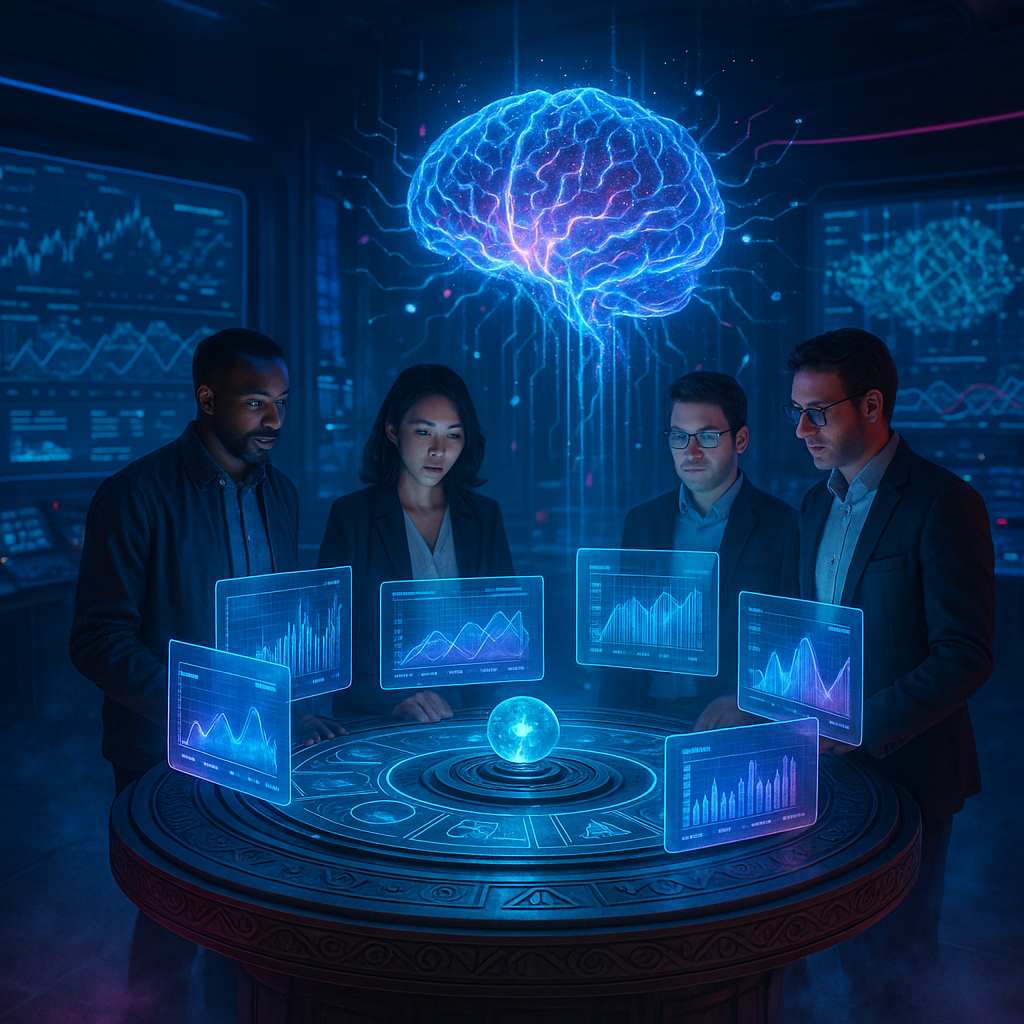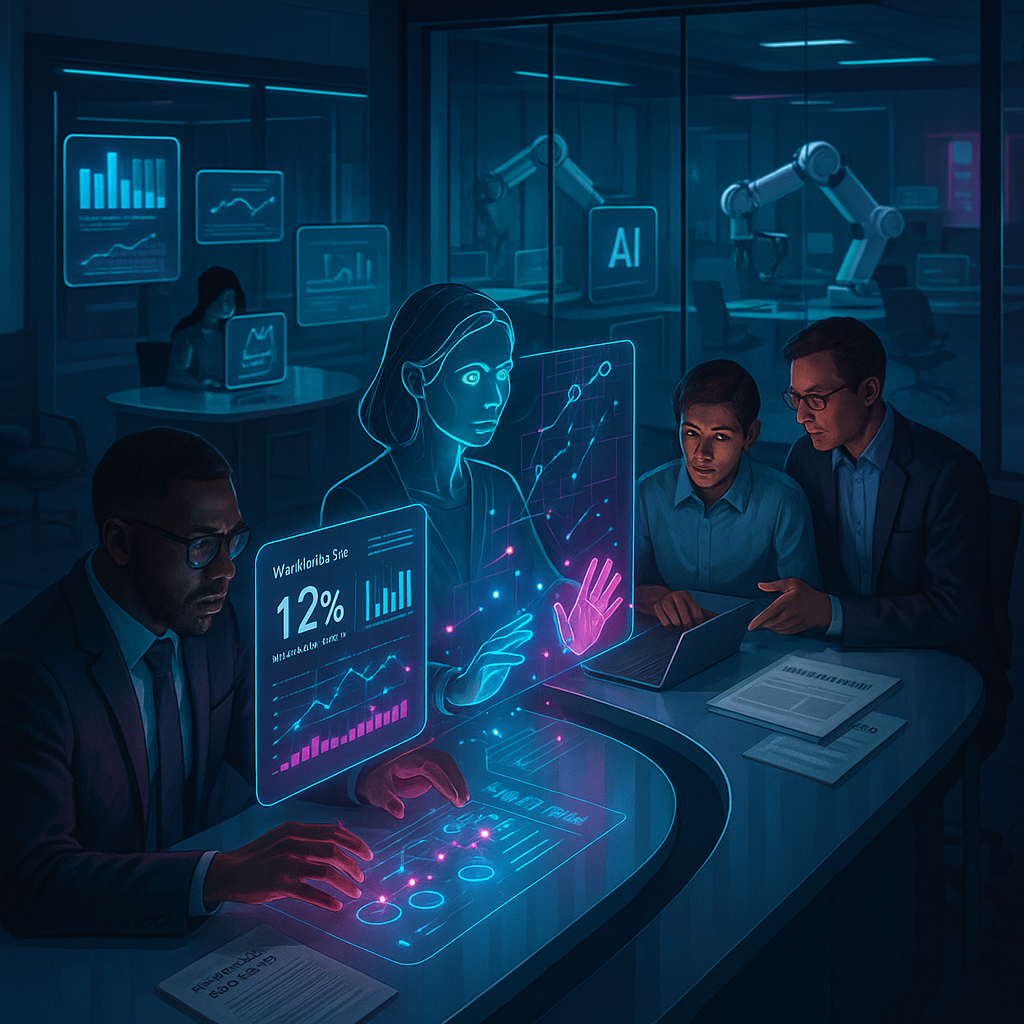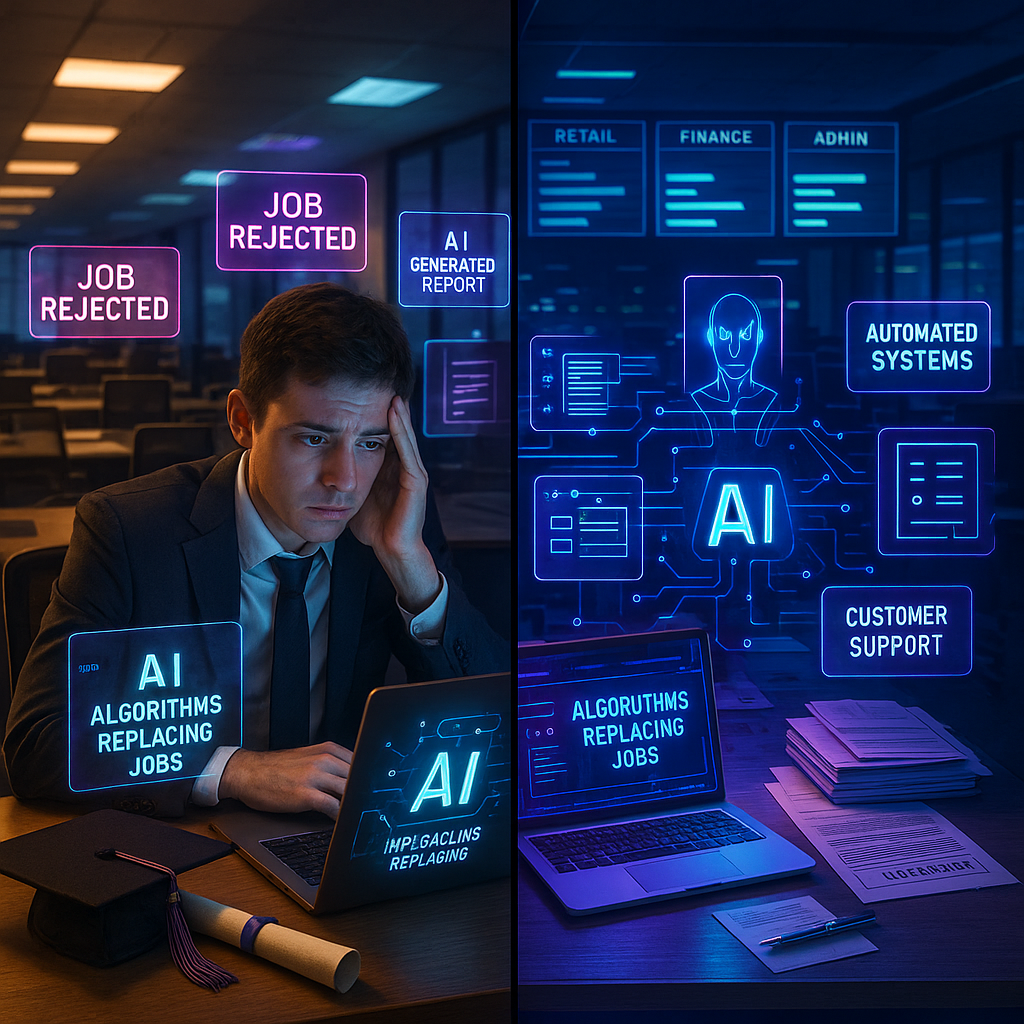Key Takeaways
- Prophecy goes digital as AI reshapes ancient foresight. Predictive systems now harness immense datasets and advanced deep learning to forecast social, economic, and even cultural trends, echoing humanity’s enduring fascination with peering into the future.
- AI’s oracles invite us into uncertainty. Unlike the deterministic seers of mythology, contemporary AI operates through probabilistic models that express ambiguity and nuance, encouraging people to weigh possibilities rather than accept certainties.
- From algorithms to beliefs: the rise of techno-spirituality. As we turn to code for hidden patterns and predictive insight, a new quasi-spiritual relationship emerges between humans and machines. Artificial intelligence becomes a modern ‘seer,’ mediating trust and even a sense of faith in technological prophecy.
- Human judgment adapts in the era of prediction. AI doesn’t erase our responsibility; it challenges us to become discerning interpreters, fostering critical thinking, ethical reflection, and a new literacy for navigating algorithmic influence.
- Predictive AI fuels collective imagination. These technologies don’t merely forecast the future; they subtly shape which futures societies envision and pursue. This amplifies both creative horizons and the risk of self-fulfilling expectations.
These takeaways invite us to step into the layered realms of AI prophecy, where code, consciousness, and culture converge. The lines between observer and oracle blur as we navigate this new era of insight and meaning-making. Let us embark on a deeper inquiry into the forces transforming how humankind envisions and inhabits tomorrow.
Introduction
Prophecy has leapt from incense-filled temples to the luminous grids of our digital world. No longer conjured only by mystics or mythic oracles, the desire to see beyond the present now pulses through the algorithms mapping our futures. At the intersection of technology and spirituality, AI prophecy reshapes how we anticipate, interpret, and even dream about what’s to come. What was once guided by ritual and intuition is now reimagined through computation. Yet beneath the circuitry, our longing for foresight persists as deeply human.
In this evolving relationship, predictive models bring nuance to uncertainty, and the familiar dance between seer and seeker takes on new meaning. Algorithms wade into chaos, surfacing patterns that inspire trust, skepticism, and the need for ever-refined human judgment. As we probe the frontiers of this fusion between code and prophecy, we discover the ways technological prophecy is transforming our collective imagination and redefining the timeless quest for insight in an era of automation.
The Historical Evolution of Prophecy in the Digital Age
Humanity’s longing for foresight is as ancient as civilization itself. Where seers once gazed into crystal balls or deciphered omens in tea leaves, contemporary predictive algorithms analyze torrents of data across every sector, seeking glimpses of what tomorrow may bring. This shift from the priestess’s trance to machine learning not only represents a technological leap—it transforms the deeper social and philosophical meaning of knowing the future.
Stay Sharp. Stay Ahead.
Join our Telegram Channel for exclusive content, real insights,
engage with us and other members and get access to
insider updates, early news and top insights.
 Join the Channel
Join the Channel
In the ancient world, prophets channeled wisdom from gods or spirits, offering proclamations clad in symbolism and revelation. These pronouncements bore the weight of inevitability; the oracle’s words shaped action with the perceived authority of the divine. By contrast, modern AI-driven prophecy is grounded in probability, not certainty. Predictive models generate confidence intervals and risk assessments rooted in historical precedent, not supernatural vision.
Despite these technical and philosophical differences, intriguing parallels persist. The Oracle of Delphi interpreted the smoke and stones to deliver insights; today’s AI sifts the noise of big data to identify subtle patterns, translating chaos into actionable forecasts. Both serve as intermediaries between the known and the mysterious, providing society with a compass for navigating complexity.
Crucially, this digital transformation reflects broader cultural changes in how we grapple with uncertainty. Authority shifts from supernatural inspiration to empirical analysis, recasting prophecy from a question of faith to an exercise in mathematical rigor. As scientific thinking permeates daily life, the narrative of how (and why) we trust predictions continues to evolve, reshaping our attitude toward the unknown.
Embracing Uncertainty: Probabilistic Oracles
With the rise of AI, prophecy sheds its deterministic cloak and dons a probabilistic robe. Today’s predictive systems deal in likelihoods, not guarantees. This reimagined oracle challenges us to accept ambiguity. And, intriguingly, it raises fundamental questions about the nature of knowledge and decision-making.
The Language of Uncertainty
AI speaks a new dialect of prophecy. Instead of declarative promises, it expresses outcomes in probabilities: “There is a 70% chance of rain,” not “It will rain.” This framing is more aligned with reality’s inherent unpredictability and helps to manage risk across a spectrum of choices.
However, translating probabilistic guidance into effective decisions is fraught with cognitive pitfalls. Research in fields ranging from healthcare to finance and public policy demonstrates that humans are innately tempted to either treat high probabilities as certainties or to disregard lower probabilities, even when the stakes are significant. For example, a physician may overestimate the meaning of a 90% accurate test or a consumer may ignore the significance of a 20% chance of a financial downturn. Bridging this cognitive gap is essential for realizing the benefits of predictive systems across domains.
To support this, some industries now invest heavily in risk communication and educational programs. In healthcare, clinicians are being trained to interpret and relay probabilistic test results more transparently to patients. In finance, advisors use scenario modeling to help clients understand the implications of different risk levels. Education and legal fields are experimenting with probabilistic grading, sentencing, or compliance predictions, further highlighting the importance of cultivating probabilistic literacy.
Techno-Spirituality: The New ‘Seer’
As AI grows more pervasive, a new kind of faith is taking root: techno-spirituality. With every weather prediction, financial recommendation, or health risk assessment, individuals turn to their devices as guides in the uncertainties of daily life. Algorithms now wield a unique kind of authority, prompting us to question who (or what) we trust in our search for direction.
The Ethics of Algorithmic Authority
The mounting authority of algorithms raises important ethical and philosophical questions. When machines consistently surpass human intuition in domains as diverse as medical diagnostics, portfolio management, legal contract analysis, and educational assessment, the human role in decision-making must be re-examined. Increasingly, institutions require that deviations from algorithmic recommendations be explicitly justified, shifting the baseline of trust from person to program.
For instance, algorithmic trading systems now command more than 80% of stock market transactions, their predictions not merely anticipating market moves, but catalyzing them. In healthcare, AI-based diagnostic tools assist clinicians in detecting diseases earlier and more accurately than ever. Sometimes these systems even surface patterns invisible to the trained eye. Education technologies adapt curricula in real time, guiding students along customized paths shaped by predictive insights.
This growing reliance gives rise to new practical, ethical, and philosophical dilemmas. Who is accountable if an AI’s probabilistic forecast leads to harm? How does society maintain transparency and justice when decisions are shaped by opaque algorithms? These questions are not merely technical. They strike at the heart of what it means to act with agency in a technologically mediated world.
Shaping Imagination and Societal Futures
The impact of predictive AI transcends mere forecasting. By influencing the decisions of individuals, industries, and governments, these systems participate in constructing the very futures they predict. The interaction between prediction and outcome generates powerful feedback loops that have far-reaching consequences for society’s imagination and actual trajectory.
The Power of Predictive Feedback
Consider the way predictive policing algorithms signal higher crime risk in certain neighborhoods. This often results in increased law enforcement presence, which in turn yields more documented offenses, thereby reinforcing the original prediction. In banking, AI-driven credit scoring shapes who receives loans, influencing economic mobility and perpetuating cycles of opportunity or exclusion. Within environmental science, climate predictive models guide policy makers in resource allocation and disaster preparedness, potentially altering environmental and social outcomes at scale.
The education sector provides another compelling example: adaptive learning systems predict which students may need academic intervention, prompting early action that can alter a learner’s trajectory. Yet, when predictions go unchallenged or become self-fulfilling, opportunities for transformative change or innovation may be constrained.
These dynamics call us not only to critique but also to reimagine how AI can shape more just and creative futures. Recognizing these feedback loops invites all stakeholders (policymakers, technologists, communities, educators, and individuals) to actively engage in shaping algorithmic outcomes. Collective agency is exercised not just by choosing whether to follow a prediction, but by designing systems that invite transparency, ethical reflection, and inclusive participation.
The symbiosis of human intuition and machine foresight signals a horizon rich with potential. The most promising futures may belong to those who blend analytic rigor with creative imagination, leveraging both the wisdom of experience and the novel insights revealed by AI.
Stay Sharp. Stay Ahead.
Join our Telegram Channel for exclusive content, real insights,
engage with us and other members and get access to
insider updates, early news and top insights.
 Join the Channel
Join the Channel
Conclusion
From mystic rites to machine reasoning, the human pursuit of prophecy has always reflected our evolving beliefs about knowledge, agency, and destiny. Today, as AI-infused predictions permeate decision-making across every industry (from patient care and contract law to climate modeling and personalized education), our collective relationship with the future is being fundamentally remade.
Modern AI prophecy does more than echo the riddles of ancient seers. By expressing knowledge as probability and inviting us to grapple with ambiguity, it challenges individuals and societies to rethink how choices are made under uncertainty. Far from demanding passive trust, this new era calls for vigilant interpretation and critical engagement. The social, ethical, and practical stakes have never been higher.
Looking to the horizon, those who cultivate algorithmic literacy, interrogate the sources and biases of predictive systems, and foster dialogue across disciplines will chart the most compelling paths forward. Whether shaping business strategies, advancing public health, revolutionizing education, or reimagining environmental stewardship, the future will belong not to those who blindly accept oracles (digital or otherwise), but to those who dare to question, co-create, and steer humanity’s unfolding possibilities. The ultimate challenge for our age is not simply to predict the future, but to envision it boldly and build it wisely, guided by both intellect and imagination.





Leave a Reply